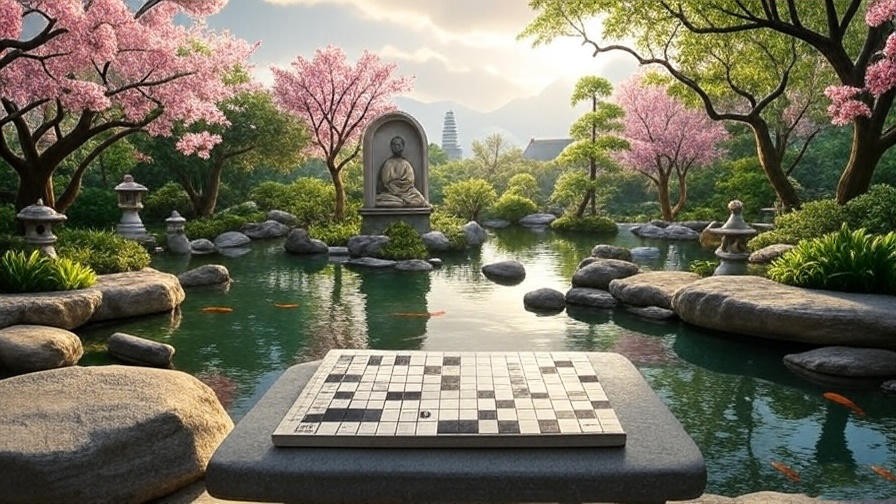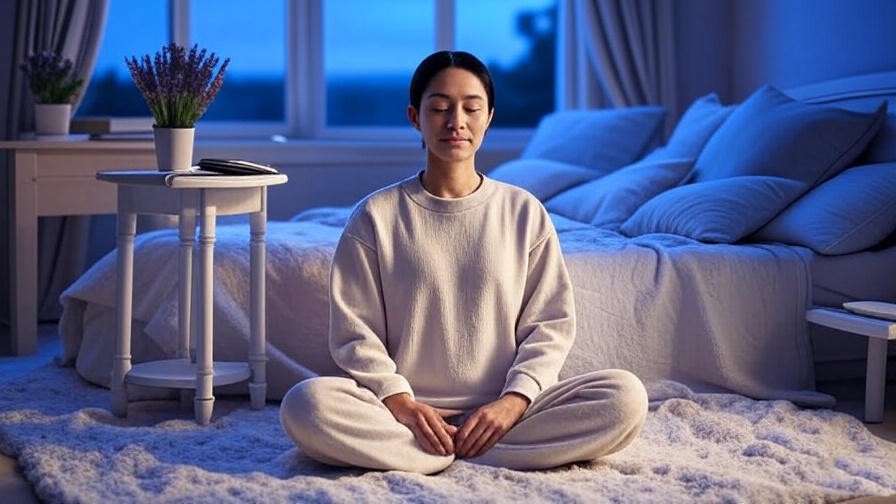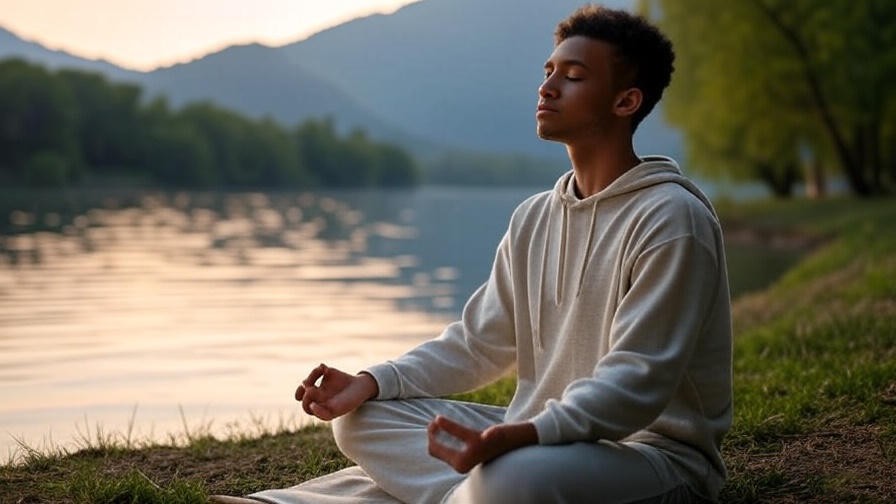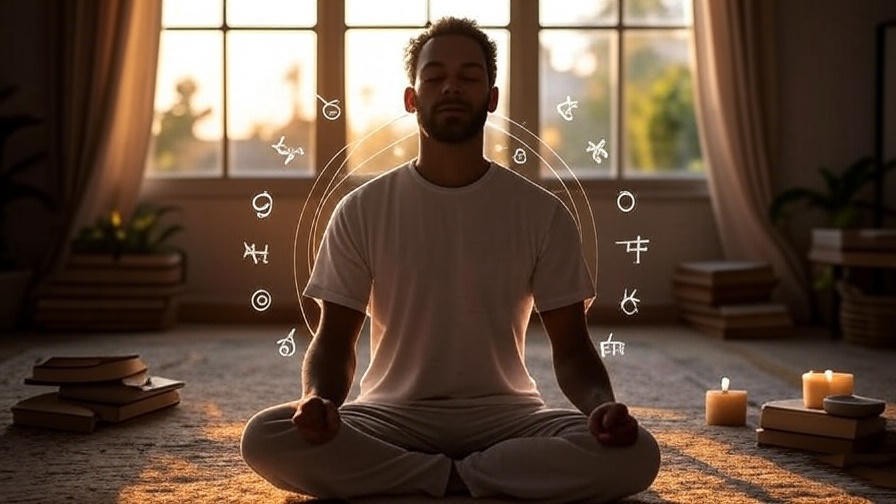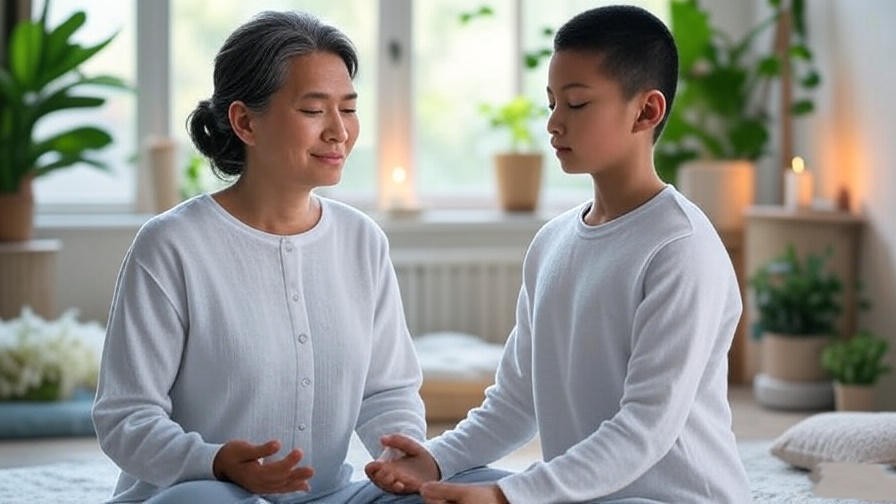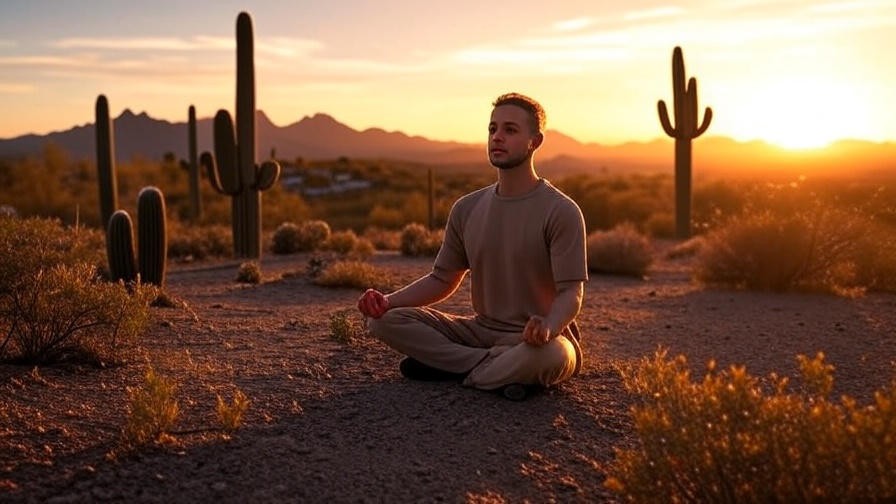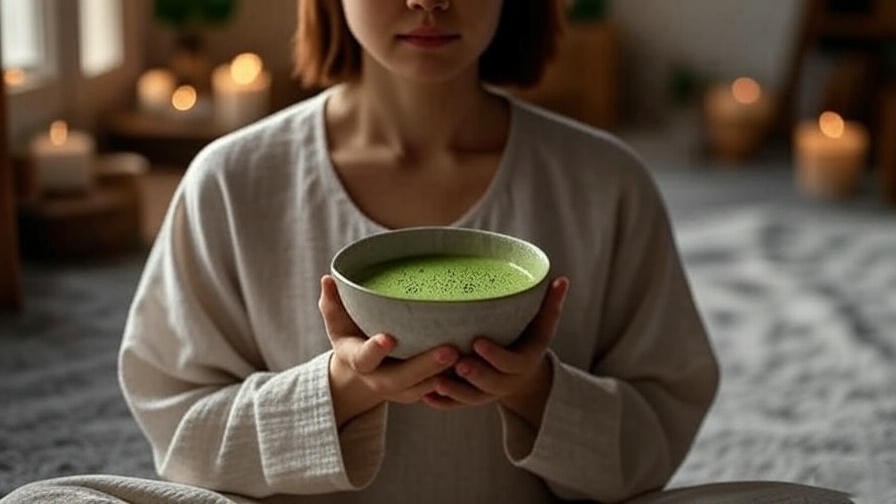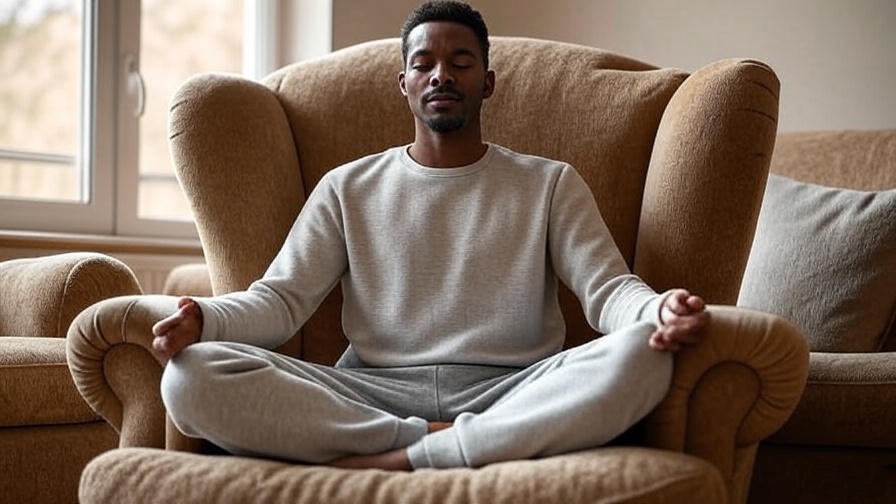Imagine sitting in a quiet corner of your home, a warm cup of tea in hand, as you ponder a crossword clue: Buddha’s meditation spot, 8 letters. Your mind drifts to the serene Bodh Gaya, where Siddhartha Gautama found enlightenment under the Bodhi tree. This simple puzzle not only sharpens your focus but also invites a moment of mindfulness, connecting you to centuries-old wisdom. For enthusiasts of meditation, sleep, dreams, and holistic well-being, solving a Buddha’s meditation spot crossword offers a unique blend of mental stimulation and spiritual reflection. In this comprehensive guide, we’ll explore the historical and spiritual significance of Buddha’s meditation spot, uncover the cognitive benefits of themed crosswords, and provide practical tips to solve them while enhancing your mindfulness practice. Whether you’re a crossword aficionado or a meditation novice, this article will help you unravel serenity through mindful puzzles.
What Is Buddha’s Meditation Spot? A Historical and Spiritual Context
The Significance of Bodh Gaya
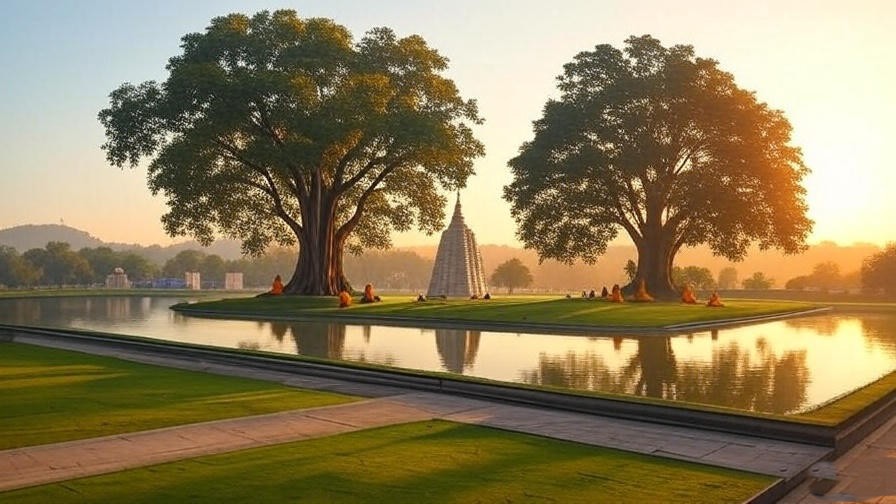
Bodh Gaya, a small town in Bihar, India, is revered as the spiritual epicenter of Buddhism. It’s where Siddhartha Gautama, after years of asceticism, sat beneath the Bodhi tree and attained enlightenment, becoming the Buddha. This sacred site, now a UNESCO World Heritage Site, draws millions of pilgrims annually, seeking to meditate in the presence of its profound history. In crosswords, “Buddha’s meditation spot” often points to Bodh Gaya (8 letters) or related terms like Bodhi Tree (9 letters, sometimes hyphenated). Its frequent appearance in puzzles reflects its cultural and spiritual prominence, making it a staple for solvers interested in Buddhist themes.
The Mahabodhi Temple, built around the Bodhi tree, stands as a testament to this transformative moment. Historical records, including those from the 3rd-century BCE emperor Ashoka, confirm Bodh Gaya’s enduring legacy. For crossword enthusiasts, knowing this context can unlock clues quickly, while for meditators, it offers a focal point for visualizing peace during practice.
Why Meditation Spots Matter in Mindfulness Practices
Sacred spaces like Bodh Gaya hold a unique place in mindfulness. They symbolize tranquility and focus, qualities essential for meditation. Visualizing such a place during meditation can anchor the mind, reducing distractions and fostering emotional balance. According to Dr. Amishi Jha, a neuroscientist specializing in mindfulness, “Imagining a serene environment, like Bodh Gaya, activates the brain’s default mode network, enhancing self-awareness and calm.” This makes Bodh Gaya not just a crossword answer but a mental refuge for practitioners seeking deeper connection.
For those pursuing holistic well-being, incorporating sacred imagery into meditation can improve sleep quality and reduce stress. By solving clues about Buddha’s meditation spot, you engage both intellectually and spiritually, creating a bridge between puzzle-solving and mindfulness.
The Appeal of Meditation-Themed Crosswords
Why Crosswords Promote Mindfulness
Crosswords are more than just word games; they’re a workout for the brain. Research from the University of Exeter (2018) shows that regular puzzle-solving can delay cognitive decline by up to 10 years. Crosswords enhance focus, improve memory, and reduce anxiety by engaging the prefrontal cortex, the brain’s hub for problem-solving. For those struggling with restless nights, non-screen-based crosswords can serve as a calming pre-sleep ritual, preparing the mind for restful slumber.
Unlike high-stimulation activities, crosswords encourage a state of “flow,” where time seems to dissolve. This mirrors the mental clarity sought in meditation, making puzzles a natural complement to mindfulness practices. For readers of this website, crosswords align perfectly with the pursuit of happiness, sleep, and holistic well-being.
The Unique Charm of Buddha-Themed Puzzles
Buddha-themed crosswords, with clues like “Buddha’s meditation spot,” offer a unique blend of education and entertainment. They introduce solvers to Buddhist concepts—enlightenment, nirvana, or sacred sites—while challenging their intellect. For example, a clue like “Tree of enlightenment, 5 letters” (answer: Bodhi) not only tests vocabulary but also prompts reflection on Buddhist philosophy. This dual benefit makes themed puzzles especially appealing to mindfulness enthusiasts.
These puzzles also foster curiosity. As you uncover answers like Bodh Gaya or Nirvana, you learn about Buddhist history, deepening your appreciation for its teachings. This educational aspect enhances the puzzle’s value, transforming a simple game into a journey of discovery.
Example Clue: “Sacred site of Buddha’s enlightenment, 8 letters.” Answer: Bodh Gaya. Try solving it mindfully—pause, breathe, and visualize the serene setting before writing the answer.
Solving the “Buddha’s Meditation Spot” Crossword Clue
Common Clue Variations and Answers
Crossword clues about Buddha’s meditation spot vary but often revolve around Bodh Gaya or related terms. Here are common variations and their answers:
- “Buddha’s meditation spot, 8 letters”: Bodh Gaya
- “Tree of enlightenment, 5 letters”: Bodhi
- “Sacred Buddhist site, 4 letters”: Gaya
- “Buddha’s enlightenment place, 9 letters”: Bodhi Tree
These clues test your knowledge of Buddhist landmarks and require attention to letter counts. For solvers, recognizing synonyms (e.g., “site” vs. “place”) and Buddhist terminology is key.
Tips for Solving Meditation-Themed Crosswords
Solving Buddha-themed crosswords can be both fun and meditative. Here are expert tips to crack these clues:
- Know Your Buddhist Terms: Familiarize yourself with terms like Bodh Gaya, Bodhi Tree, Nirvana, and Dharma. A quick review of Buddhist history can help.
- Check Letter Patterns: If the clue is “Buddha’s meditation spot, 8 letters,” and you have “_ O _ H _ A _ A,” try Bodh Gaya first.
- Stay Calm with Mindfulness: If stuck, take a deep breath, close your eyes, and visualize a peaceful place like Bodh Gaya to clear your mind.
- Use Crossword Tools: Reputable platforms like Crossword Solver or Merriam-Webster’s crossword dictionary can provide hints without spoiling the fun.
By approaching puzzles mindfully, you not only solve clues but also cultivate patience and focus, aligning with meditation principles.
Tool Recommendation: For extra help, try the Crossword Solver app, which offers clue suggestions while preserving the challenge of solving.
How Crosswords Enhance Meditation and Holistic Well-Being
The Science Behind Puzzles and Mental Health
The cognitive benefits of crosswords are well-documented. A 2020 study in the Journal of Alzheimer’s Disease found that puzzle-solving enhances neuroplasticity, the brain’s ability to form new neural connections. This strengthens memory, improves problem-solving, and reduces stress hormones like cortisol. For those seeking better sleep, engaging in puzzles before bed can shift the mind away from daily worries, promoting relaxation.
Crosswords also foster a sense of accomplishment, boosting dopamine levels and enhancing happiness. For readers of this website, this aligns with the goal of holistic well-being, where mental clarity supports emotional and physical health.
Combining Crosswords with Meditation Practices
Integrating crosswords into your meditation routine can amplify their benefits. Here’s a step-by-step guide:
- Set the Scene: Find a quiet space, light a candle, or play soft instrumental music.
- Solve a Clue: Tackle a Buddha-themed clue, like “Buddha’s meditation spot, 8 letters.”
- Reflect Mindfully: After solving, pause to visualize Bodh Gaya. Imagine the Bodhi tree and the calm it represents.
- Meditate Briefly: Spend 5 minutes focusing on your breath, using the clue’s theme as a mental anchor.
- Repeat: Alternate between solving and meditating to deepen focus.
Example: After solving “Tree of enlightenment, 5 letters” (Bodhi), meditate on the concept of enlightenment, picturing yourself under a tree, free from distractions.
Expert Tip: Meditation coach Sarah Thompson recommends, “Use crossword clues as meditative prompts. Reflecting on their meaning can deepen your practice and foster inner peace.”
Creating Your Own Buddha-Themed Crossword
Steps to Design a Meditation-Inspired Puzzle
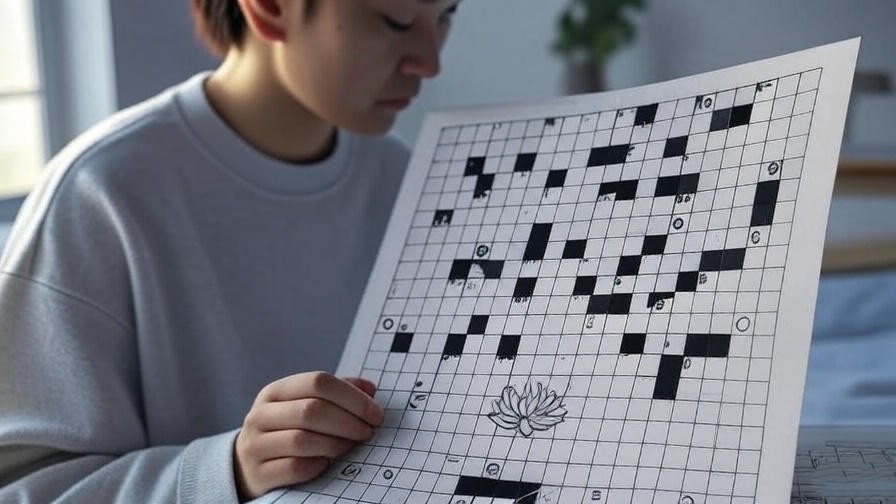
Crafting your own Buddha-themed crossword is a rewarding way to blend creativity with mindfulness. It allows you to deepen your understanding of Buddhist concepts while engaging others in your passion for puzzles and meditation. Here’s a step-by-step guide to creating a meditation-inspired crossword:
- Choose a Theme: Focus on Buddhist landmarks, figures, or concepts, such as Bodh Gaya, the Bodhi Tree, or mindfulness terms like Nirvana and Dharma. This ensures relevance to the “Buddha’s meditation spot” theme.
- Select Clues and Answers: Pick 10–15 words related to Buddhism, ensuring a mix of difficulty levels. For example, include Bodh Gaya (8 letters) for intermediates and Gaya (4 letters) for beginners.
- Design the Grid: Use a standard 15×15 crossword grid for simplicity. Free tools like Crossword Compiler or online platforms like Puzzle Maker can help create a balanced layout.
- Write Clear Clues: Craft clues that are precise yet engaging. For example, instead of “Buddha’s spot” (vague), use “Sacred site of Buddha’s enlightenment, 8 letters” for clarity.
- Test Your Puzzle: Solve it yourself or ask a friend to ensure clues are fair and answers fit correctly.
- Add a Mindful Touch: Include a note encouraging solvers to reflect on the answers, such as meditating on the concept of Bodhi after solving.
Tools like Crossword Compiler (available for purchase) or free platforms like Discovery Education’s Puzzlemaker are beginner-friendly and ensure professional-quality grids. By creating your own puzzle, you not only challenge yourself but also share mindfulness with others.
Sample Clues for a Buddha-Themed Crossword
To inspire you, here are seven sample clues for a Buddha-themed crossword, designed to educate and engage:
- “Sacred site of Buddha’s enlightenment, 8 letters” (Bodh Gaya)
- “Tree of enlightenment, 5 letters” (Bodhi)
- “State of ultimate peace, 7 letters” (Nirvana)
- “Buddha’s teachings, 6 letters” (Dharma)
- “City of Buddha’s first sermon, 7 letters” (Sarnath)
- “Emperor who spread Buddhism, 6 letters” (Ashoka)
- “Meditation posture, 5 letters” (Lotus)
These clues vary in difficulty, making the puzzle accessible to beginners while challenging seasoned solvers. They also reinforce Buddhist knowledge, aligning with the article’s focus on mindfulness and education.
Engagement Element: Share your own Buddha-themed crossword clues in the comments below! How would you clue “Bodh Gaya” or “Nirvana”? Let’s inspire each other.
The Broader Benefits of Mindfulness and Puzzles for Well-Being
Enhancing Happiness Through Mindful Activities
Mindfulness practices, including crossword-solving, are powerful tools for fostering happiness and emotional resilience. According to a 2021 study in Frontiers in Psychology, mindfulness activities increase positive emotions by encouraging present-moment awareness. Solving a clue like “Buddha’s meditation spot” prompts solvers to pause and reflect, cultivating gratitude and calm. This aligns perfectly with the website’s focus on happiness, sleep, and holistic well-being.

Puzzles also provide a sense of mastery. Completing a crossword, especially one with meaningful themes like Buddhism, boosts self-esteem and reduces feelings of overwhelm. For readers seeking holistic well-being, this combination of mental challenge and emotional reward is a pathway to lasting happiness.
Practical Tips for Incorporating Puzzles into Daily Life

To maximize the benefits of crosswords and mindfulness, integrate them into your daily routine. Here are practical suggestions:
- Morning Focus Ritual: Spend 10 minutes solving a Buddha-themed crossword to start your day with clarity. Pair it with a brief meditation, focusing on a clue’s theme (e.g., Bodh Gaya).
- Pre-Sleep Wind-Down: Use a paper-based crossword to avoid blue light exposure, which can disrupt sleep. Solving a few clues can calm racing thoughts, preparing you for restful slumber.
- Enhance with Sensory Elements: Play soft instrumental music or use lavender aromatherapy while solving to create a soothing environment.
- Group Activity: Host a crossword-solving session with friends or family, discussing Buddhist concepts as you solve to deepen connections.
By making puzzles a regular part of your mindfulness practice, you reinforce habits that support mental clarity, emotional balance, and better sleep.

